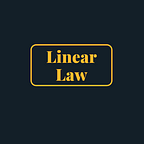What is Section 144? The difference between 144 , Lockdown and Curfew. — Linear LAW
The whole world is witnessing an exceptional situation which has disturbed all of us to a very great extent. This article is aimed at discussing the meaning of section 144, lockdown and curfew and the infinitesimal difference between these three.
Introduction
As the new covid -19 spreads , words such as lockdown , section 144 and curfew have become part of our daily vocabulary. But what exactly do they? In this time of planetary pandemic we have come across terms like these which hold a variegated differences in every person’s mind. Let’s scrutinize the differences between them.
Section 144 basically is the section 144 of criminal procedure code 1973 which prohibits unlawful assembly and provides the power to issue order in urgent cases of nuisance, apprehended danger, danger to public health, safety and tranquillity and affray. It empowers executive magistrate of any state or a territory to issue an order to prohibit people to assemble at one place or organize any event where five or more people’s gathering is to be expected. The order of section 144 does not prohibits essentials services like hospitals, banks, grocery etc. Any citizen defying the order of section 144 shall be punished under section 188 of Indian Penal Code.
The order of section 144 shall be in force till 2 months and can also be extended till 6 months according to the situation. The order can be withdrawn at any time.
The state of isolation or restricted access instituted as a security measure is the simple definition of lockdown by Google. Lockdown is just a severe version of section 144. In addition to all the cease in section 144 flights, trains and all public transport movements is restricted. Essential services are provided in a lockdown but it is up to state to decide what comes under essential services example grocery, hospitals, banks etc.
Curfew is ordered with strict measures to keep people inside for public health , safety and to prohibit riots. It is the most severe measure to deal with the danger to public health and tranquillity.
- A Dime A Dozen
- Government have the power to ban Internet in all the three cases.
- The ground for imposing all the three cease is same ie. Danger to public health , life, riot, affray and public tranquillity.
Originally published at https://linearlaw.com on August 8, 2020.
